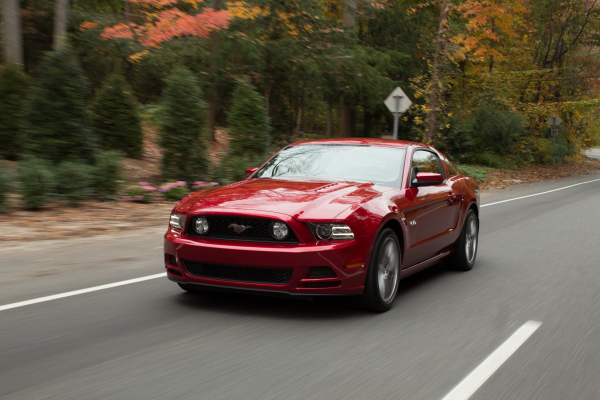
Autumn is inescapably about the conclusion of the year. As much nostalgia is attributed to it, the fact is things are once again coming to an end. Did we accomplish all the things we set out to do at the start? Did we uphold the promises we made to ourselves? what unforeseen trials did we inevitably take on and what was the outcome?
The feeling in the wind is that this refresh of the Ford Mustang will be the last before a radical new design comes about. Back in 2005, we were collectively gobsmacked by what we beheld. There was nothing but potential ahead. Now that we approach the final performance, we can look back and say the fifth generation Mustang had one hell of a run, and is going out with a bang.

What’s interesting about the Mustang is just how much it rides on old school credibility. Poll the average passer-by on what image comes to mind and I’ll bet a kidney the majority wistfully harken back to the classic 60’s styling, the one given the blessing of Steve McQueen, chair-holder in the pantheon of car gods. “Bullitt” is synonymous with the Mustang as is the name “Eleanor” and words like “Boss” and “Mach 1.” The mustang got all the cool words and In the era that “cool” was invented; this was one of the raw materials. We love the Mustang. Specifically, we love that Mustang.
After that things get slightly nebulous. The debate about the Mustang II swings wildly from “amazing success” to “lamentable failure.” There is more love for the Fox platform that followed, often with a caveat tacked on to dissociate themselves from anyone who may like the “modern” car. This one, it seems, is ok to like. In the 90’s, the Mustang was radically redesigned and found themselves everywhere, year after year, so they must have been popular. Thing is this, is the era where everyone was hesitant to admit liking Mustangs at all. The 60’s cred was stretching dangerously thin, making it too transparent to mask what the Mustang had become: a plastic, uninspired example of what Americans had to offer in the way of sportiness. Looking back, it’s little wonder why the kids in my neighborhood got BMW’s and VW GTI’s. Who got the Mustang? Barbie.
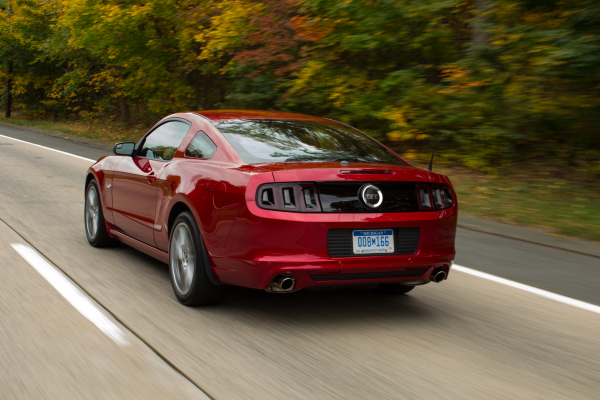
Mercifully, in 2005, we got the Mustang we always wanted: a modern version of the iconic vehicle we had in our hearts. Jay Mays, Ford’s senior VP of design dubbed it “retro-futurism”, a term I’m not wild about when it comes to the Mustang, despite being the original subject of the term. I always felt like the 2005 redesign was the car’s style getting back on track to where it was supposed to go. “retro-futurism” in my mind is when cars are done up in some embarrassing attempt to take era-specific styles and modernize them. We end up with things like the Chevrolet SSR, which I’m sure in their minds was supposed to manifest into the automotive version of Hajime Sorayama artwork come to life, but instead resulted in something that wouldn’t look out of place affixed to a diner spewing out malt drinks. Or the PT Cruiser which Chrysler desperately wanted people to think “you’re just a set of white-wall tires away from being a Cagney-eqsue pinstripe wearin’ gangster cool guy” when the reality was “your mom’s car is hideous”. But I digress. The 2013 restyling grows from the sleekness added from the 2011 refresh and adds a more fittingly aggressive facia that has a brutish handsomeness like Clive Owen or a Rottweiler. Black trimmed LED tail lights can be found around back, similar to the ones found on other new Ford entries like the updated Flex.

The Mustang GT still rocks the 5.0L V8 from the previous year with no changes, just the same beastly 420 hp and 390 ft-lbs of torque to play with. The engine remains docile traveling through city streets but rumbles impatiently with every throttle tap, itching for some backroad to roar through or highway to eat up. overtaking is brisk and decisive as the car accelerates effortlessly, blaring the song of the V8 like a battle charge to anyone in it’s path. the 6-speed manual transmission compliments the engine by doing its job dutifully, letting you fly through gears without a second thought.
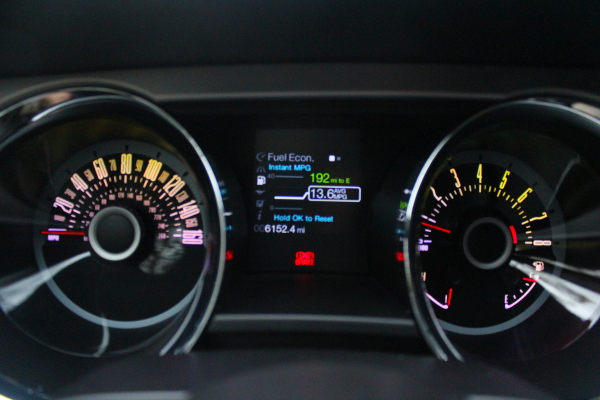
A factor of a true Grand Tourer is how long the driver could bear plonked behind the wheel for an extended road trip, and the first day’s test of the Mustang was destined to simulate this. The fall months in New York last year brought trying times, and a lot of tragic things happened. As this one unfolded, a major artery of traffic was completely shut down, leaving myself and many others gridlocked, trickling through other routes, but ultimately spending a pretty solid day within our vehicles. Me and the interior this Mustang got to know each other intimately over the course of 8 hours. The 2013 brings loads of new standard and optional interior features to the Mustang. The most exciting feature, standard in the premium packages of both the V6 and V8, is the inclusion of track apps, a series of performance tracking menus that allow you to capture data such as acceleration times for various distances (e.g. 0-60, or quarter mile), your braking distance, and a G-meter. This is all displayed on a 4.2-inch LCD screen in the gauge cluster. This screen is also where you can access the vehicle’s settings, including the firmness of the EPAS electric steering. Settings can be light and casual cruising or set to sport for a tighter response.
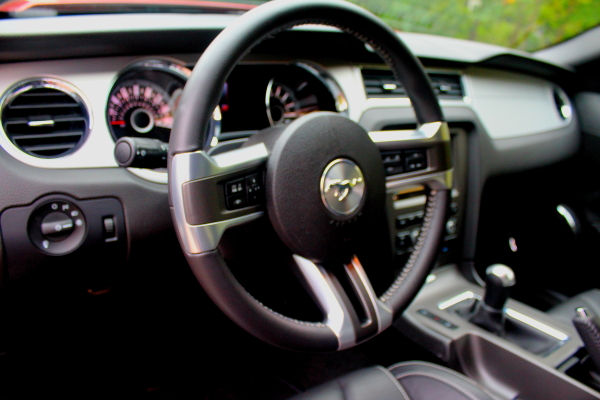
Optional Recaro seats for passenger and driver make for a more firmer jaunt for those sitting up front. Those sitting in the back still have to contend with the usual cramped nature of a 2-door coupe. Optional ambient light kits allow you to illuminate the footwells and cup holders with the color of your choosing. Combine this with the always-available color settings in the gauges, and you can customize the mood of the car to your liking. Optional still is Ford’s SYNC navigation system with SiriusXM which also gives you alternate controls to interface with the stereo and climate. The Mustang is one of the handful of vehicles that has yet to receive the MyFordTouch update, the graphic interface found in new vehicles that works on top of the existing SYNC system. It’s a system that already had it’s critics and using MyFordTouch in other vehicles then going to the vanilla SYNC highlights those frustrations. Going through settings can (and is with “MFT”) be easier. The interface also looks dated in comparison to other existing systems, both from other carmakers and within Ford. Indeed, the LCD screen for track apps in the same car makes the SYNC menus look long in the tooth.
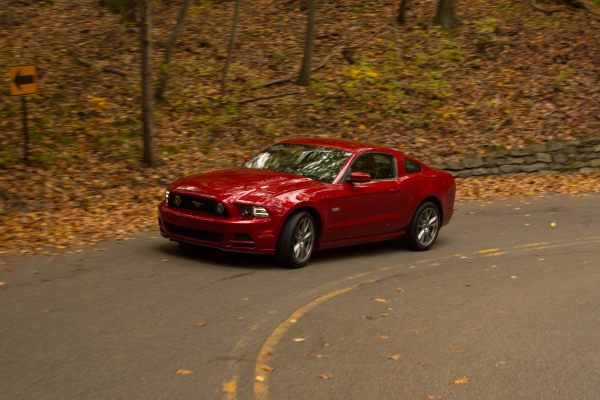
Brembo brakes are a welcome option on the GT, adding the brand’s rotors and 4-piston calipers to the front to control the beastly power plant. A 3.31 limited slip real axle is standard, but that can be outfitted with a 3.73 ratio or 3.55 depending on preference. Independent MacPherson struts are found up front with the rear sporting Constant-Rate Coil Springs, 3-Link Design with Panhard Rod and Stabilizer Bar.
The Mustang won’t be stealing the thunder from cars like the 370Z as far as handling, but it pulls with confidence. As mentioned before, the engine is attentive to inputs, allowing you to commit to maneuvers with little hesitation. The coupe feels heavy, but solid and doesn’t roll in turns as much. Even with the live rear axle to contend with, it’s been engineered to be competitive, and you can still make her dance as long as you know how to lead. Nuanced driving will be rewarded but being delicate doesn’t suit the Mustang and grabbing her by the scruff of the neck is often required to get her to behave.
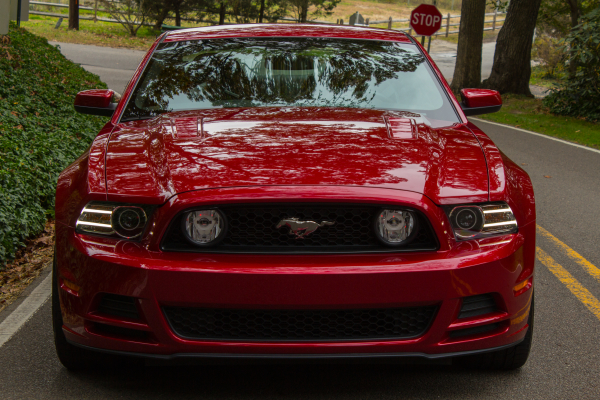
If you’ve spent any time with racing seats, your comfort is relative. Blasting sideways through bends will feel great, but idling in a daily commute with render your back and shoulders into a twisted modern art structure. Racing seats don’t pass “the girlfriend test” meaning as cool and functional as they are, if she doesn’t like sitting there, she doesn’t care how well the bolster you through a corner. Don’t even mention 4-point belts (consequently, if she loves it and brings up 4-point seat belts unprompted, put a ring on it). Stuck in nightmarish traffic for a better part of the day then going to the back roads, the Recaros in the mustang met a happy middle ground: supportive enough for a satisfying bash, but comfortable enough to keep you from emerging from your destination ruined. Expect to want more road feel when taking it for a romp and less when you’re simply traveling, and while the cabin is baffled, be prepared to talk over the V8’s every utterance.
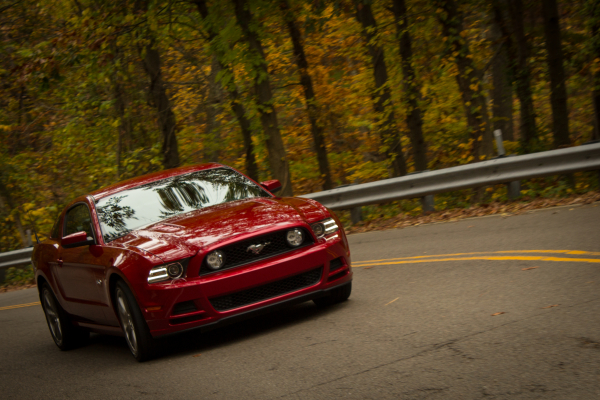
Gripes with the Mustang are limited to a few minor things. The outdated-feeling SYNC interface could really do with some of that MyFordTouch to make it feel like its part of the modern Ford lineup and not the boisterous sibling rebelling against the straight-laced Detroit family. That would also bring communication between SYNC and the gauge cluster’s LCD screen. Having a capable full-color screen there that can’t give you simple navigation updates is a little disappointing. The center console’s armrest has always been a nagging issue for me, having affixed the release towards the rear where, as it happens to me a third of the time, it pops open when my elbow hits the latch in the right spot. Performance-wise, this is very much a muscle car before anything else, but has certainly learned a few tricks along its tenure. The rear axle was damned as outdated as far back as ’05 so by now, regardless of the improvements made to the suspension, people are ready to see it go. It may not be an issue for much longer, if the rumors are true.
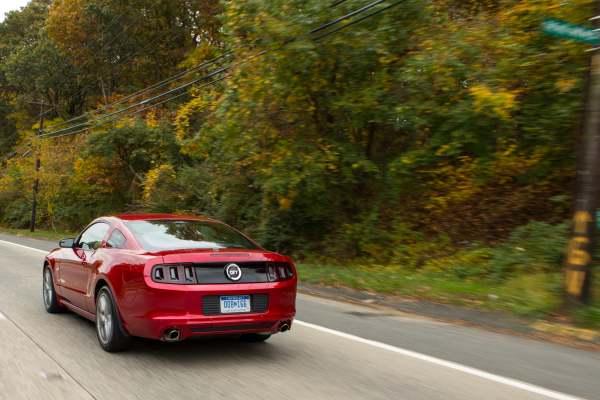
The clear opponents of the Mustang will be the neighborhood rivals: Chevrolet Camaro, and Dodge’s Charger and Challenger. The GT premium comes in with an MSRP of $34,300, but all told, our test vehicle topped out at around $42,000 with options. The Camaro 2SS comes in higher at $36,135, while the Charger R/T Max is priced in the same ballpark at $36,495. The Dodge Challenger R/T Plus swoops in under them at $33,100. The Camaro’s V8’s extra 1.1 liters over the Mustangs 5.0L only gives it a 6 hp advantage (426 vs. 420, respectively) while the Dodge’s 5.7L V8’s can only muster a still respectable 370-5 hp. It’s a very close fight and the numbers only tell a third of the story. Putting aside personal taste, Each of these cars have distinct driving characteristics, and at the end of the day, you’ll have to get your hands on all of them to find the one that suits your needs.

It will take a lot to rattle the Mustang. It’s stood the test of time, going through generations of hits and misses, but it has always endured while others haven’t. Yes, some of its discontinued rivals have come back from the dead, but it’s the Mustang that caused their resurrection. If there is a completely revamped generation in the near future, and regardless if it’s superior or not, this generation did everything it set out to do, and will go down as one of the best examples of Mustang, period.
-Promiscuous Data-
Accolades – A few red light challenges (that went unanswered, for the record)
Notable Rival Of The Week – A superstorm that did significant damage to the NY metro area, closing roads and stranding our test car in the garage for a few days.
Price & Availability – Available now. MSRP for the GT Premium: $34,300. Test car priced with options at $42,210
Fuel Eco – mpg of City 15/ Highway 26. Our test saw an average of 14 mpg at worst and 17 at best.
Bottom Line – The last of the 5th generation Mustangs ends up as the best.
Words By – Alex Kalogiannis
Exterior Photos By – Sean Spencer
Interior Photos By – Victor Kalogiannis
(EDITOR’S NOTE: The Mustang was on loan for us to test in the midst of hurricane Sandy. The AutoKinesis team would very much like to thank Ford and their New York team for their graciousness and trust during this period. -AK)
See the Mustang in action in This AK Original: http://youtu.be/Jm-iyu0bsf8

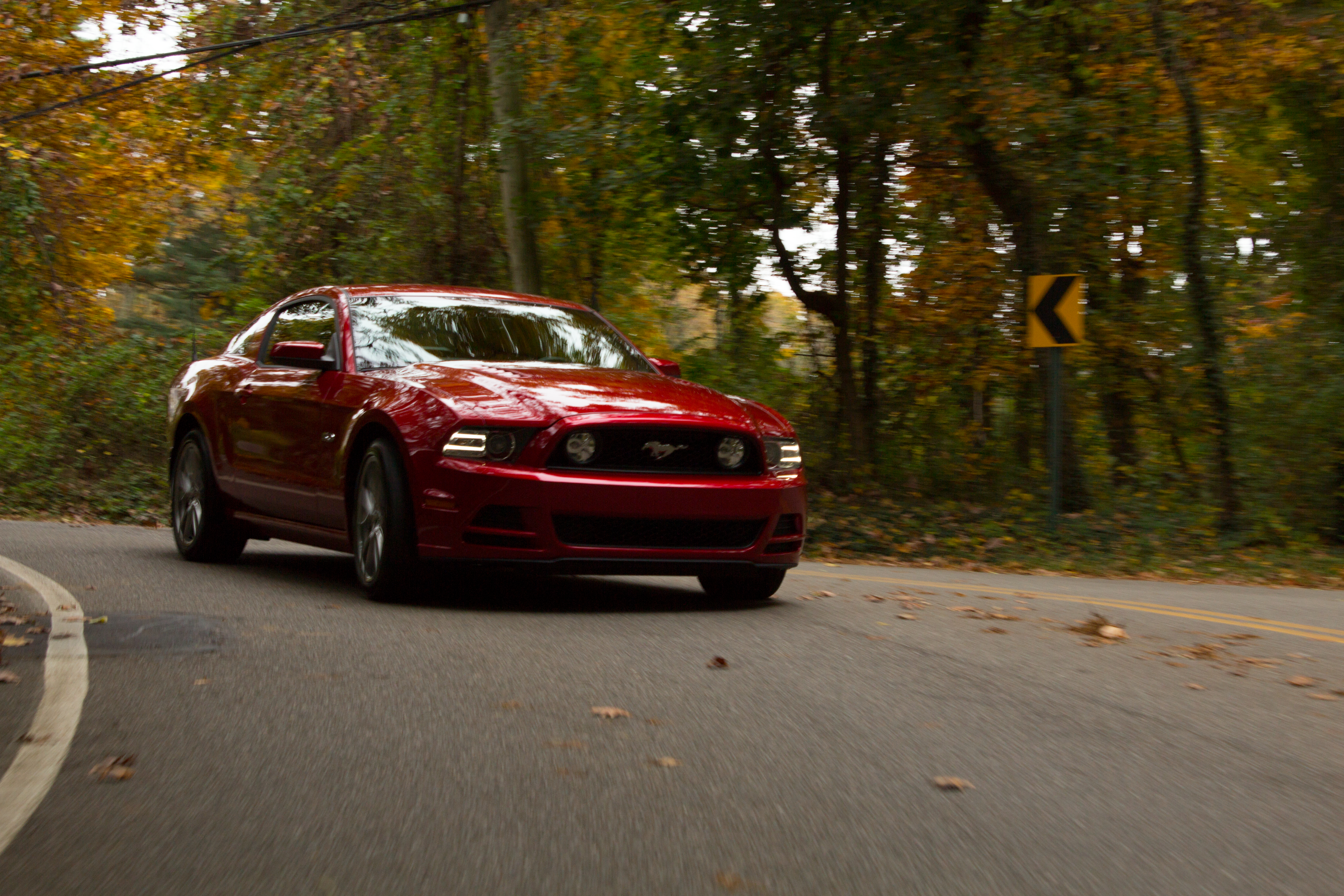

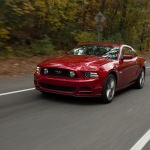
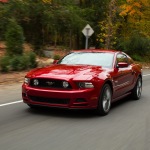
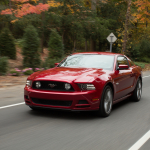

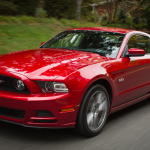
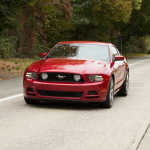


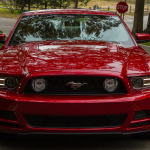
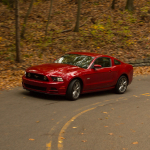



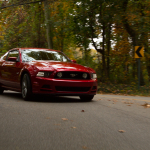
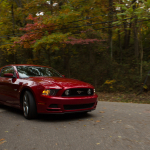

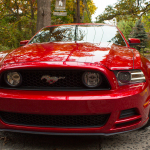


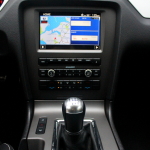






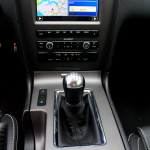
One thought on “The Wild Paragon: 2013 Ford Mustang GT Review”